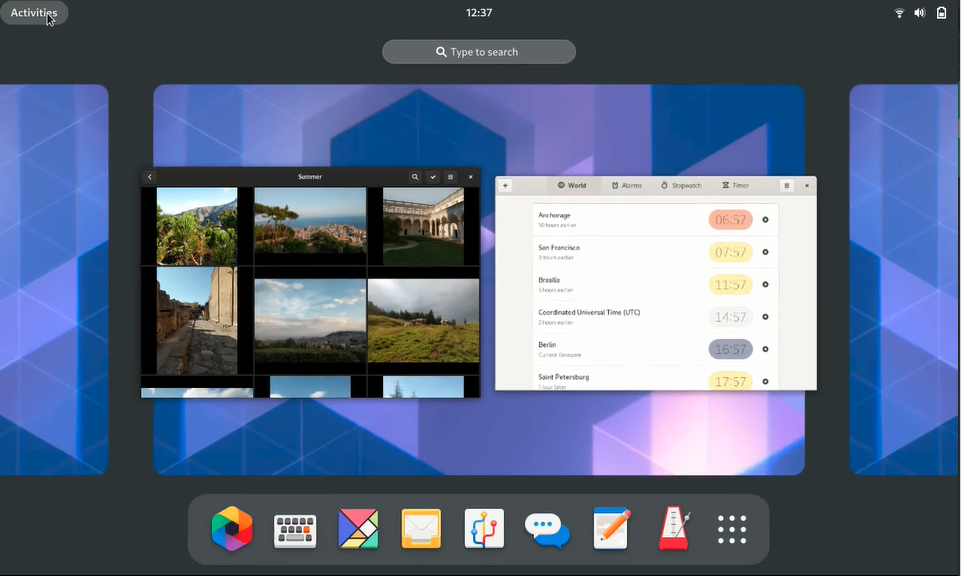The users of the Linux / Unix desktop Gnome have a few new features: The developers are making extensive changes to the Gnome Shell user interface. The focus is on a new spatial arrangement of the work surfaces, which affects the overview of activities and the behavior of the application launcher. The operating concept thus approximates mobile devices and, according to the developers, is particularly suitable for control via touchpad or hotkeys. However, the new features do not represent a hard break, as with the change from Gnome 2 to Gnome 3.
In a blog post, the developers respond to the feedback from the community with an FAQ and explain the goals of the revision. The developers gave a first insight into the planned innovations in the blog Gnome Shell & Mutter back in December.
New app grid and activity overview In the new design of the activity overview, the virtual desktops are now lined up horizontally and replace the vertical list on the right-hand edge of the screen. The windows have app icons and show the complete window title when you mouseover.
(Image: Gnome)
The app overview differs little from the current design in Gnome 3. 38. Existing features, such as arranging applications at will and writing them in folders, remain possible. The grid still lists apps page by page. Users now scroll through them horizontally instead of vertically.
(Image: Gnome)
Navigation through the two-dimensional space According to the developers, the adjustments in the design make the Gnome-Shell more intuitive because the horizontal and vertical axes fulfill clear functions. Users scroll horizontally through the workspaces. The vertical axis zooms in and out of the app and activity overview. This arrangement should primarily benefit users who operate the desktop with a touchpad or hotkeys. With Super + Alt + arrow keys or a swipe with four fingers on the touchpad in one direction, the user interface jumps to the desired view.
(Source: Gnome) If a window is moved to another virtual desktop using drag-and-drop, the activity overview zooms out to show all work areas. The new design should be suitable for multi-display setups as well as for the vertical orientation of the screen. The active corner is retained. The developers don’t provide an option to switch between the new and old design. But be open to efforts by the community to keep the classic design via Gnome extensions.
Gnome 40 follows Gnome 3. 38, which removes the previous digit. The new version scheme is intended to avoid bulky version numbers and to clarify the gradual development steps. The project did not use the name “Gnome 4” in order not to arouse false expectations that the new Gnome version already uses the recently released graphics library GTK 4.0.
(ndi)













